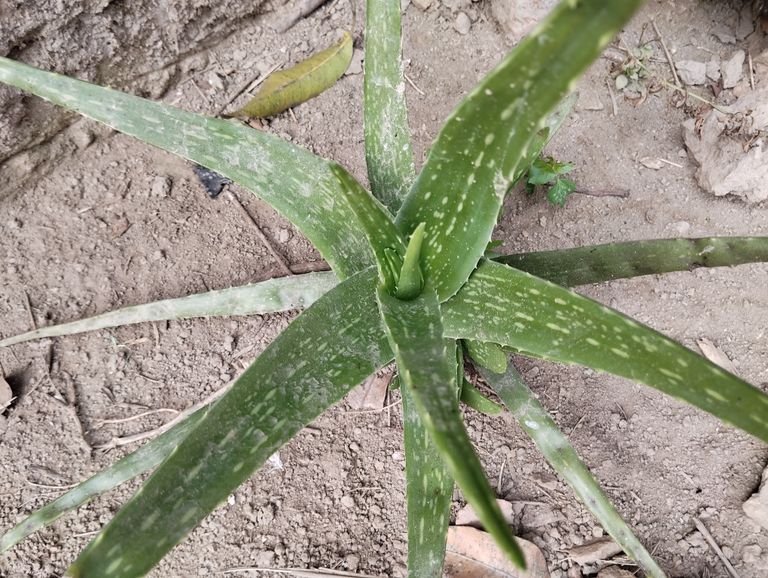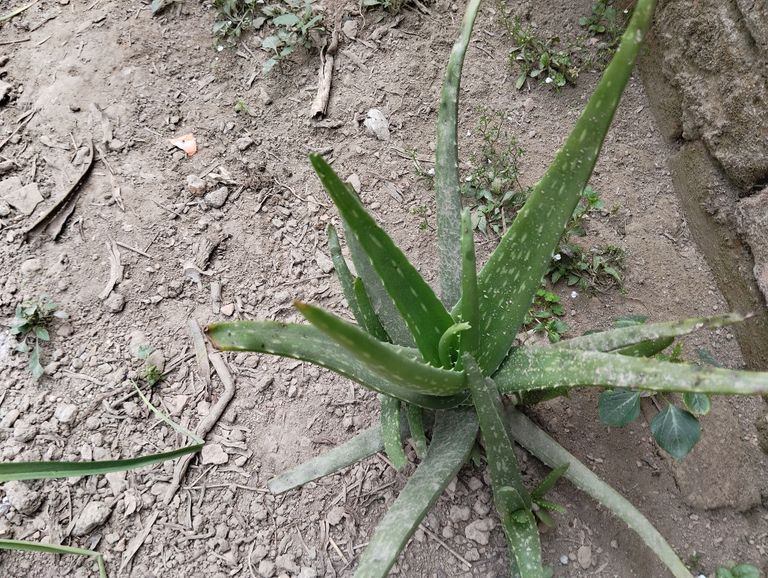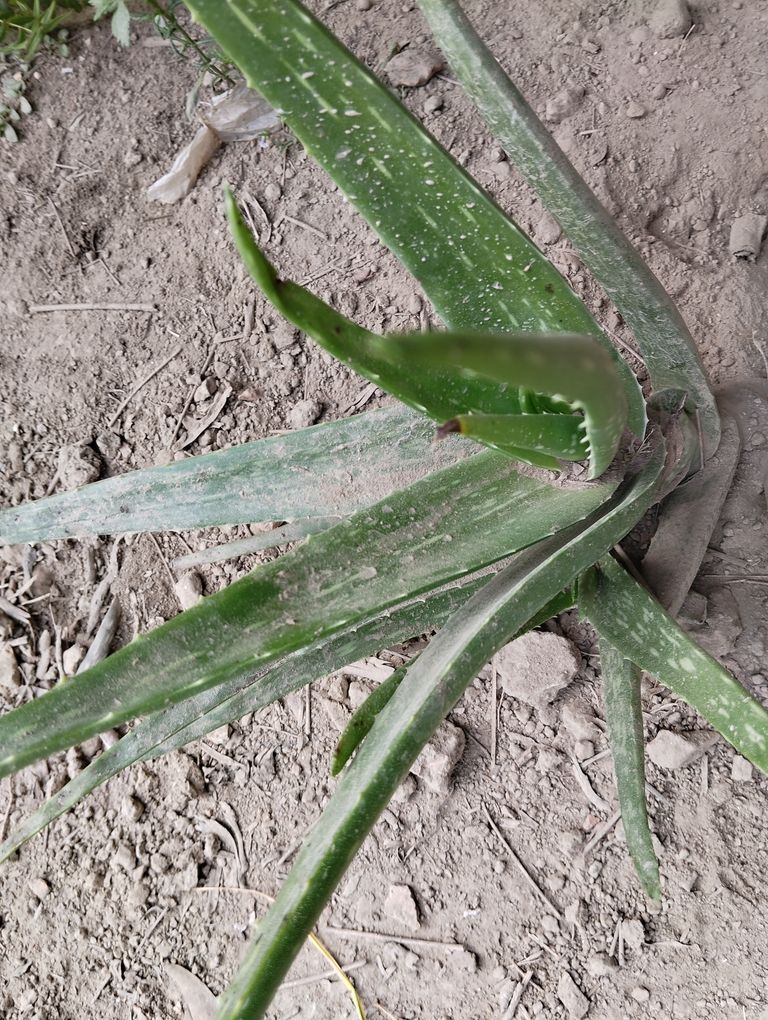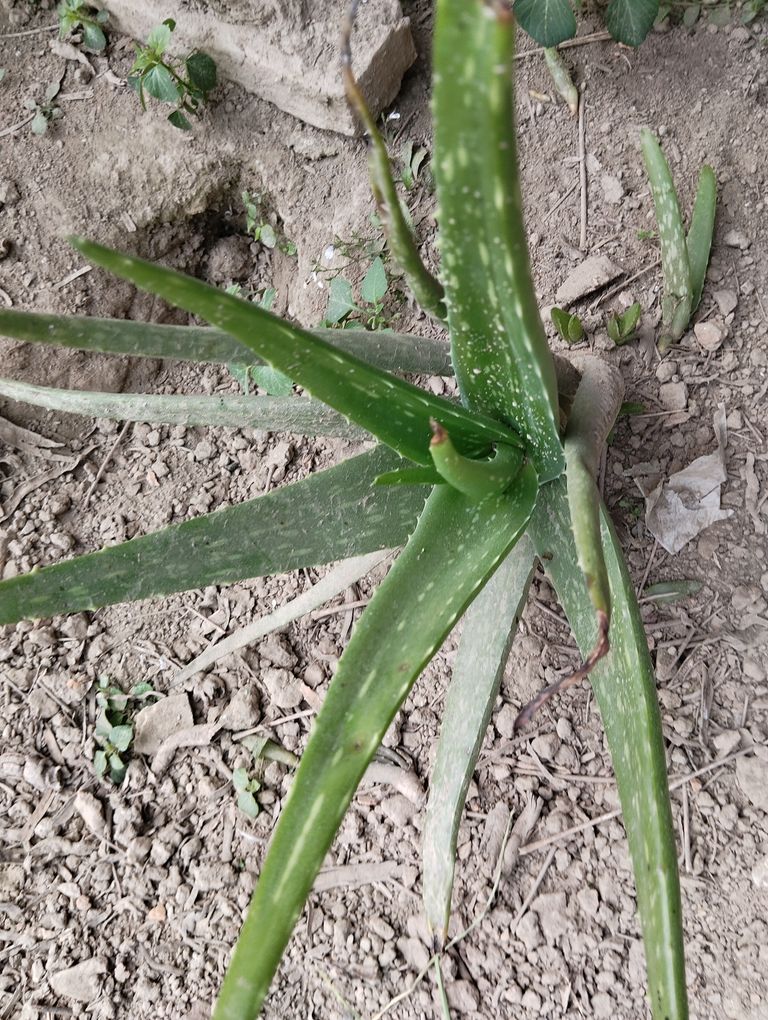
Health Benefits of Aloe Vera Leaves.
Aloe vera, often referred to as the "plant of immortality," has been used for centuries due to its incredible medicinal and therapeutic properties. Its leaves contain a gel-like substance packed with vitamins, minerals, enzymes, and antioxidants, making it a powerful natural remedy. Below is a detailed exploration of the various health benefits of aloe vera leaves.
- Supports Skin Health
Aloe vera is renowned for its skin-nourishing properties. The gel inside its leaves is rich in vitamins C and E, which help to:
Soothe burns and wounds: Aloe vera gel provides cooling relief for sunburn and accelerates the healing process of cuts and minor wounds.
Hydrate the skin: Its moisturizing properties make it an excellent remedy for dry or irritated skin.
Fight acne: Aloe vera’s antibacterial and anti-inflammatory properties reduce redness and prevent acne breakouts.
Reduce wrinkles and fine lines: Regular use of aloe vera can enhance skin elasticity and slow down signs of aging.
- Boosts Digestive Health
Aloe vera leaves contain compounds like aloin, which can aid digestion. Benefits include:
Relieving constipation: The latex found under the leaf skin acts as a natural laxative, promoting bowel movements.
Soothing gastric issues: Aloe vera gel can reduce inflammation in the gut and help with conditions like acid reflux, ulcers, and irritable bowel syndrome (IBS).
Improving nutrient absorption: Aloe vera enhances the absorption of essential nutrients in the digestive tract.
- Enhances Immunity
The antioxidants in aloe vera combat free radicals in the body, protecting cells from oxidative stress. Regular consumption of aloe vera juice can:
Strengthen the immune system.
Reduce the risk of chronic diseases caused by free radical damage.
Provide anti-inflammatory benefits, reducing overall inflammation in the body.
- Supports Weight Management
Aloe vera gel can assist in maintaining a healthy weight by:
Boosting metabolism.
Detoxifying the body.
Improving digestion, which helps regulate appetite and promotes fat-burning.
- Promotes Hair Health
Aloe vera is an excellent natural remedy for various hair-related issues. Its benefits include:
Reducing dandruff: The antifungal properties of aloe vera help combat dandruff and dry scalp.
Strengthening hair: Aloe vera’s vitamins and minerals nourish hair follicles, making hair stronger and shinier.
Stimulating growth: The enzymes in aloe vera improve blood circulation to the scalp, promoting hair growth.
- Regulates Blood Sugar Levels
Studies suggest that consuming aloe vera can help regulate blood sugar levels in people with diabetes. Aloe vera gel:
Improves insulin sensitivity.
Reduces fasting blood sugar levels.
Helps manage Type 2 diabetes when included as part of a balanced diet.
- Detoxifies the Body
Aloe vera acts as a natural detoxifier. It helps cleanse the liver and kidneys, eliminating toxins and promoting better organ function. Drinking aloe vera juice regularly can flush out harmful substances and improve overall well-being.
- Improves Oral Health
Aloe vera has antibacterial and anti-inflammatory properties, making it beneficial for oral health. It can:
Soothe gum inflammation and reduce plaque build-up.
Treat mouth ulcers and sores.
Freshen breath and maintain healthy gums.
- Alleviates Joint and Muscle Pain
Aloe vera’s anti-inflammatory properties make it a natural remedy for joint and muscle pain. Topical application of aloe vera gel can:
Reduce swelling and inflammation caused by arthritis.
Provide relief from muscle aches and stiffness.
- Boosts Cardiovascular Health
Aloe vera supports heart health by:
Improving blood circulation.
Lowering cholesterol levels.
Reducing blood pressure.
How to Use Aloe Vera Leaves
To maximize the benefits of aloe vera leaves, you can use them in the following ways:
- Topical application: Apply the gel directly to your skin for burns, wounds, or as a moisturizer.
- Aloe vera juice: Extract the gel, blend it with water, and consume it to improve digestion and immunity.
- Hair mask: Mix aloe vera gel with coconut oil or honey and apply it to your hair for deep conditioning.
Precautions
While aloe vera is highly beneficial, it is important to use it in moderation. Overconsumption of aloe vera latex can cause diarrhea or cramping. Pregnant women, breastfeeding mothers, and people with pre-existing health conditions should consult a doctor before using aloe vera.
Aloe vera leaves are a powerhouse of health benefits, offering solutions for skin, hair, digestion, and overall well-being. Including aloe vera in your daily routine, either as a topical application or as part of your diet, can significantly improve your quality of life. Embrace this miraculous plant and enjoy its natural healing properties.

Benefits of Leaves: Nature's Miracles
Leaves are among the most essential components of plants and trees, serving not only the flora but also the environment, animals, and human beings. From producing oxygen to providing nourishment and medicinal value, leaves are nature's unsung heroes. This blog explores the various benefits of leaves and their significant impact on our daily lives.
- Source of Oxygen
Leaves play a vital role in the process of photosynthesis, where they use sunlight, water, and carbon dioxide to produce oxygen and glucose. This oxygen is essential for all living beings to survive. Forests, with their countless trees and leaves, are often referred to as the "lungs of the Earth" for their role in maintaining atmospheric balance.
- Food Production and Storage
Leaves are responsible for producing food for plants, which serves as the foundation of the food chain. They store essential nutrients and energy that benefit herbivores and, indirectly, carnivores. Humans also consume various edible leaves, such as spinach, lettuce, kale, and basil, which are rich in vitamins, minerals, and antioxidants.
- Medicinal Uses
Since ancient times, leaves have been used in traditional medicine to treat numerous ailments. For instance:
Tulsi (Holy Basil): Boosts immunity and relieves respiratory issues.
Neem: Has antibacterial and antifungal properties, often used for skin care.
Mint: Aids in digestion and reduces nausea.
Aloe Vera: Known for its healing properties, especially for burns and skin ailments.
Many modern medicines derive their active ingredients from the compounds found in leaves.
- Environmental Benefits
Leaves are crucial for maintaining environmental balance. Their benefits include:
Carbon Sequestration: Leaves absorb carbon dioxide, reducing the impact of greenhouse gases.
Soil Fertility: Fallen leaves decompose and enrich the soil with organic matter, improving its fertility.
Erosion Control: Dense foliage protects soil from erosion caused by wind and water.
- Shelter and Habitat
Leaves provide shelter for numerous creatures. Birds use them to build nests, while insects and small animals find refuge in the foliage. In aquatic environments, submerged leaves create habitats for fish and other marine organisms.
- Aesthetic and Cultural Importance
Leaves have aesthetic value, enhancing landscapes, gardens, and interiors. They symbolize growth, life, and rejuvenation in various cultures. For example, the olive leaf represents peace, while the lotus leaf is sacred in many Asian traditions.
- Economic Significance
Many leaves have economic value, being cultivated and traded worldwide. Tea leaves, for example, are a major global commodity. Similarly, banana leaves are used as eco-friendly plates in various cultures, reducing plastic waste.
- Contribution to the Water Cycle
Leaves release water vapor into the atmosphere through transpiration. This process contributes to cloud formation and rainfall, ensuring the continuity of the water cycle.
- Air Purification
Leaves absorb pollutants, such as sulfur dioxide, carbon monoxide, and particulate matter, improving air quality. Many indoor plants with large leaves are effective in filtering toxins, making them popular choices for urban homes and offices.
- Culinary Uses
Leaves enhance the flavor of numerous dishes. Bay leaves, curry leaves, and cilantro are common in cooking, while grape leaves are used to prepare traditional delicacies like dolmas. Moreover, leaves like pandan and banana are used to wrap and cook food, adding a distinct aroma and taste.
- Spiritual and Symbolic Roles
Leaves hold spiritual significance in many religions and traditions. For example, the peepal leaf is considered sacred in Hinduism and Buddhism, symbolizing enlightenment. Palm leaves are used in Christian traditions during Palm Sunday celebrations.
- Sustainable Practices
Leaves play a role in promoting sustainability. For instance:
Fallen leaves can be composted to create natural fertilizers.
Certain leaves are used as biodegradable packaging, reducing reliance on plastic.
Leaves are an indispensable part of nature, offering countless benefits to life on Earth. They are not only vital for the survival of plants but also play a significant role in maintaining ecological balance, providing resources, and enhancing our quality of life. Recognizing their importance and protecting plant life is crucial for a sustainable and healthy future.
By appreciating the many benefits of leaves, we deepen our understanding of nature's interconnectedness and our responsibility to preserve it.

Aloe Vera Cultivation on Rooftops: A Complete Guide
Aloe vera, often referred to as the "wonder plant," is renowned for its numerous health, skincare, and medicinal benefits. Cultivating aloe vera on rooftops is gaining popularity among urban gardeners due to its low maintenance requirements and high utility. This blog will walk you through everything you need to know about growing aloe vera on your rooftop, including its benefits, requirements, and care tips.
Why Grow Aloe Vera on Rooftops?
- Space Optimization
Rooftop gardening is an excellent way to utilize unused space. Aloe vera, being a compact and hardy plant, fits perfectly into small urban settings.
- Low Maintenance
Aloe vera thrives in harsh conditions, requiring minimal water and care. It is perfect for busy individuals who want greenery without the hassle.
- Environmental Benefits
Rooftop plants reduce the heat island effect in cities, improve air quality, and enhance insulation for your home.
- Endless Uses
From skincare to first-aid remedies, aloe vera gel can be used for various purposes. Cultivating your supply ensures organic and chemical-free use.
Requirements for Aloe Vera Cultivation on Rooftops
- Climate and Temperature
Aloe vera grows best in warm climates. It thrives in temperatures between 18°C to 30°C but can tolerate up to 40°C. Protect the plant during extreme winters with plastic sheets or by moving the pots indoors.
- Containers and Pots
Choose wide, shallow pots as aloe vera has a shallow root system. Ensure the pots have drainage holes to prevent waterlogging. Terracotta or clay pots are ideal for better aeration.
- Soil
Well-draining soil is crucial for aloe vera. A mix of garden soil, sand, and compost (in a 2:1:1 ratio) works best. Alternatively, use cactus or succulent potting mixes.
- Sunlight
Aloe vera loves sunlight! Place the pots in areas receiving 6-8 hours of direct sunlight daily. If your rooftop gets harsh sunlight, provide partial shade to prevent leaf burns.
- Watering
Water sparingly, allowing the soil to dry out completely between waterings.
Overwatering is the most common cause of aloe vera's demise, so ensure the soil is dry before adding water.
Step-by-Step Guide to Planting Aloe Vera on Rooftops
- Selecting the Plant
Purchase healthy aloe vera saplings or propagate from mature plants.
Ensure the sapling has firm, green leaves and no signs of disease or damage.
- Preparing the Pot
Fill the pot with the recommended soil mix.
Add small pebbles or stones at the base for better drainage.
- Planting
Place the sapling in the center of the pot, ensuring the roots are covered with soil.
Leave the base of the leaves slightly above the soil to prevent rot.
- Initial Care
Water lightly after planting.
Place the pot in a bright, sunny spot and monitor for signs of stress.
Caring for Aloe Vera on Rooftops
- Fertilizing
Feed the plant every 2-3 months with a balanced, water-soluble fertilizer.
Avoid over-fertilizing, as aloe vera thrives in nutrient-poor soil.
- Pruning
Remove dried or yellowing leaves to encourage new growth.
Harvest mature leaves from the outer layers for use.
- Pest and Disease Management
Aloe vera is generally pest-resistant, but watch out for mealybugs and fungal infections.
Use neem oil or mild insecticides to treat infestations.
- Seasonal Care
During monsoons, reduce watering as rainfall can make the soil waterlogged.
In winter, move pots to sheltered areas if temperatures drop significantly.
Benefits of Aloe Vera Cultivation
- Medicinal Uses
Aloe vera gel soothes burns, cuts, and insect bites.
It aids digestion and boosts immunity when consumed.
- Skincare
Natural moisturizer for skin and hair.
Treats acne, sunburns, and dryness.
- Air Purification
Aloe vera improves indoor air quality by removing toxins like formaldehyde.
- Cost-Effective
Growing your aloe vera saves money on skincare and health products.
Common Mistakes to Avoid
- Overwatering
Aloe vera hates soggy soil. Stick to a strict watering schedule.
- Using Improper Soil
Heavy soil can suffocate roots. Always use well-draining mixes.
- Ignoring Sunlight Needs
Lack of sunlight can make the plant leggy and weak.
- Neglecting Pot Size
Crowded roots can hinder growth. Repot every 1-2 years to allow space.
Growing aloe vera on rooftops is an eco-friendly, rewarding, and therapeutic activity. Its minimal care requirements make it an ideal plant for beginners and busy city dwellers. By following this guide, you can enjoy a thriving aloe vera garden on your rooftop, providing endless benefits for your health, home, and environment.

Aloe Vera Cultivation on Rooftops: A Complete Guide
Aloe vera, often referred to as the "wonder plant," is renowned for its numerous health, skincare, and medicinal benefits. Cultivating aloe vera on rooftops is gaining popularity among urban gardeners due to its low maintenance requirements and high utility. This blog will walk you through everything you need to know about growing aloe vera on your rooftop, including its benefits, requirements, and care tips.
Why Grow Aloe Vera on Rooftops?
- Space Optimization
Rooftop gardening is an excellent way to utilize unused space. Aloe vera, being a compact and hardy plant, fits perfectly into small urban settings.
- Low Maintenance
Aloe vera thrives in harsh conditions, requiring minimal water and care. It is perfect for busy individuals who want greenery without the hassle.
- Environmental Benefits
Rooftop plants reduce the heat island effect in cities, improve air quality, and enhance insulation for your home.
- Endless Uses
From skincare to first-aid remedies, aloe vera gel can be used for various purposes. Cultivating your supply ensures organic and chemical-free use.
Requirements for Aloe Vera Cultivation on Rooftops
- Climate and Temperature
Aloe vera grows best in warm climates. It thrives in temperatures between 18°C to 30°C but can tolerate up to 40°C. Protect the plant during extreme winters with plastic sheets or by moving the pots indoors.
- Containers and Pots
Choose wide, shallow pots as aloe vera has a shallow root system. Ensure the pots have drainage holes to prevent waterlogging. Terracotta or clay pots are ideal for better aeration.
- Soil
Well-draining soil is crucial for aloe vera. A mix of garden soil, sand, and compost (in a 2:1:1 ratio) works best. Alternatively, use cactus or succulent potting mixes.
- Sunlight
Aloe vera loves sunlight! Place the pots in areas receiving 6-8 hours of direct sunlight daily. If your rooftop gets harsh sunlight, provide partial shade to prevent leaf burns.
- Watering
Water sparingly, allowing the soil to dry out completely between waterings.
Overwatering is the most common cause of aloe vera's demise, so ensure the soil is dry before adding water.
Step-by-Step Guide to Planting Aloe Vera on Rooftops
- Selecting the Plant
Purchase healthy aloe vera saplings or propagate from mature plants.
Ensure the sapling has firm, green leaves and no signs of disease or damage.
- Preparing the Pot
Fill the pot with the recommended soil mix.
Add small pebbles or stones at the base for better drainage.
- Planting
Place the sapling in the center of the pot, ensuring the roots are covered with soil.
Leave the base of the leaves slightly above the soil to prevent rot.
- Initial Care
Water lightly after planting.
Place the pot in a bright, sunny spot and monitor for signs of stress.
Caring for Aloe Vera on Rooftops
- Fertilizing
Feed the plant every 2-3 months with a balanced, water-soluble fertilizer.
Avoid over-fertilizing, as aloe vera thrives in nutrient-poor soil.
- Pruning
Remove dried or yellowing leaves to encourage new growth.
Harvest mature leaves from the outer layers for use.
- Pest and Disease Management
Aloe vera is generally pest-resistant, but watch out for mealybugs and fungal infections.
Use neem oil or mild insecticides to treat infestations.
- Seasonal Care
During monsoons, reduce watering as rainfall can make the soil waterlogged.
In winter, move pots to sheltered areas if temperatures drop significantly.